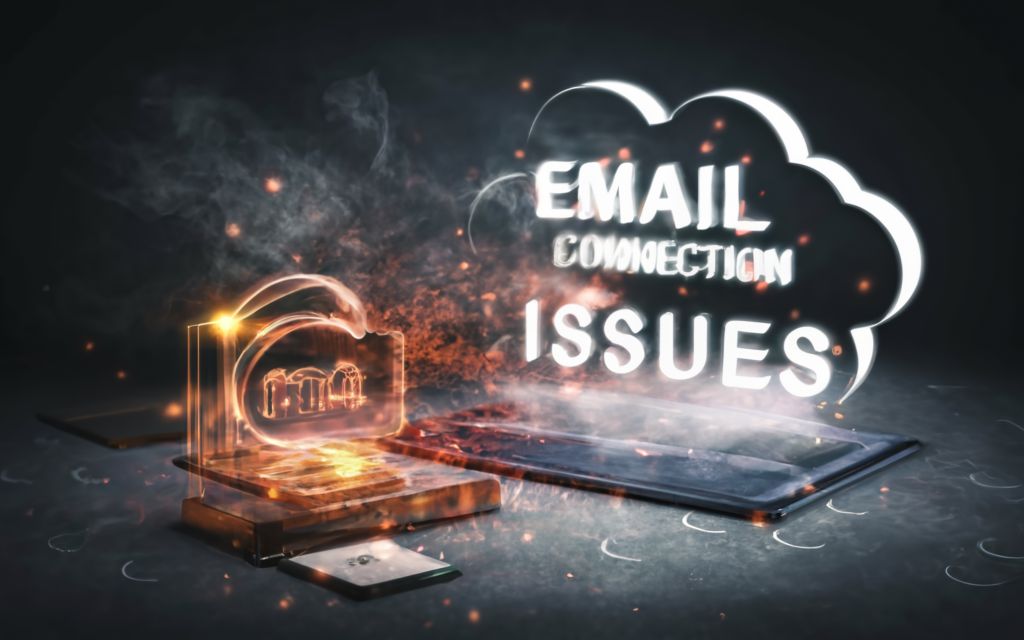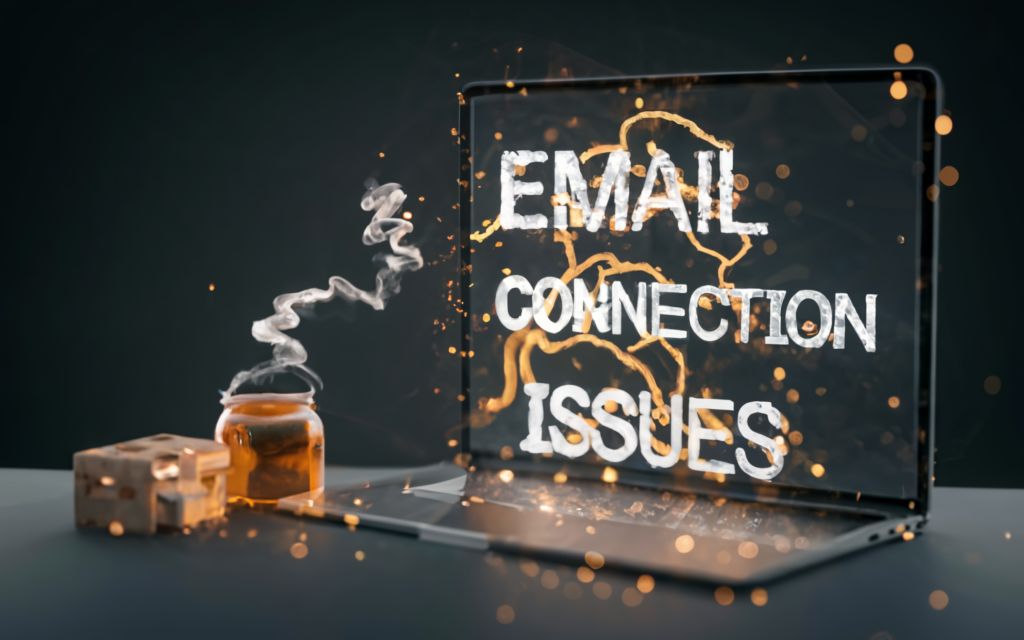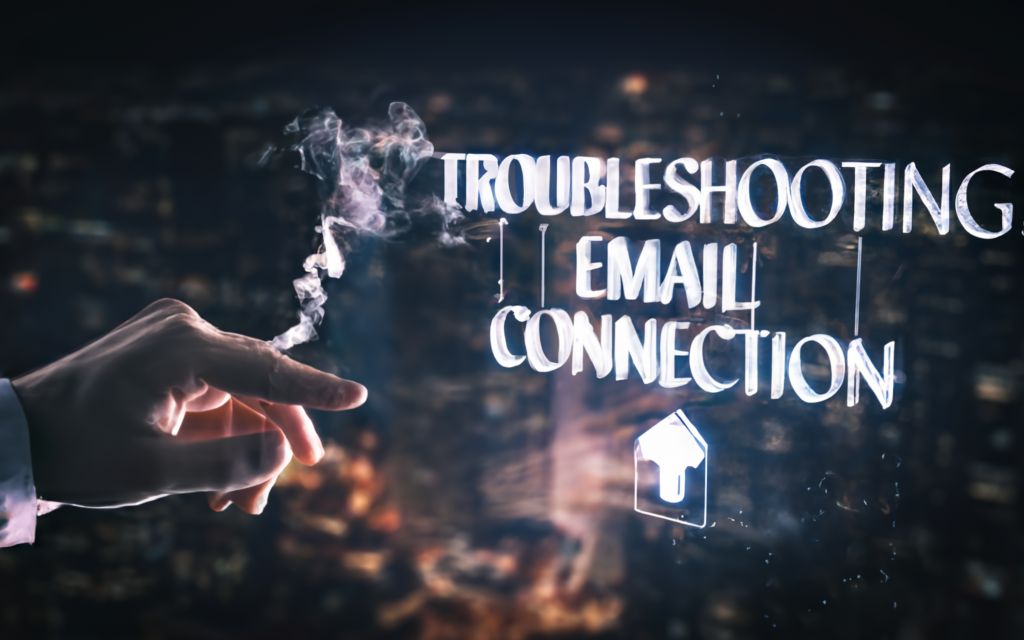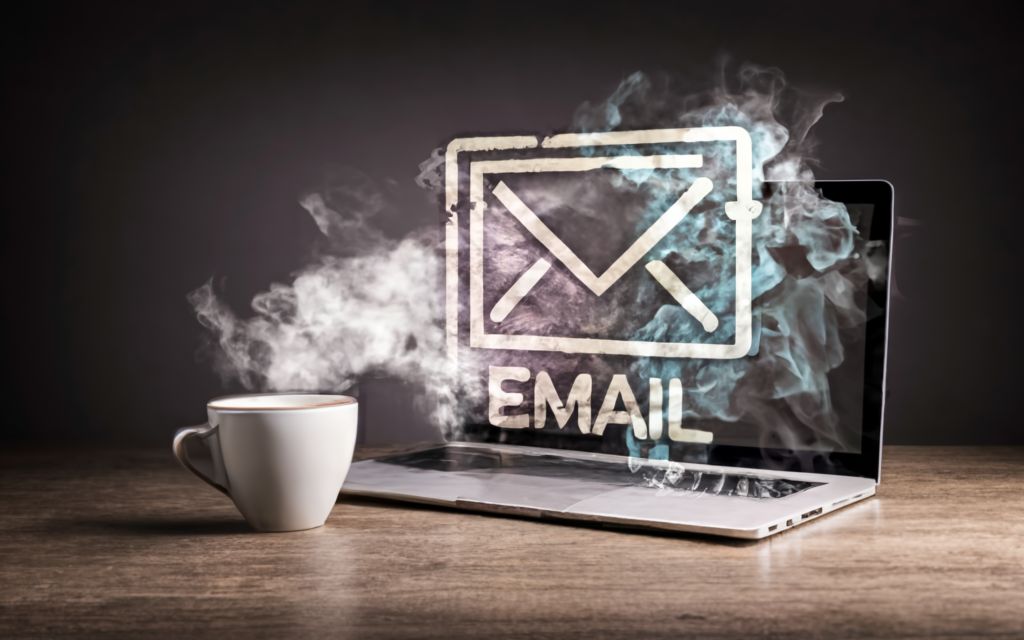Has your email client ever flashed an annoying error like “Connection to outgoing mail server failed”? Or perhaps you’ve helplessly watched emails pile up in your outbox when they won’t send. Dealing with email connection issues like unable to connect to SMTP or POP3 servers can be incredibly frustrating! But some simple troubleshooting steps can often get your email back on track. This comprehensive guide dives into the common email errors you may encounter, what causes them, how to diagnose problems, and most importantly how to FIX them! We’ll cover everything from incorrect SMTP settings, authentication and certificate issues, network problems, outages, and email security policies. Whether you are a home user battling your ISP’s email servers or a system admin managing enterprise Exchange infrastructure, you’re bound to find useful troubleshooting tips and preventative best practices here. Let’s get your emails sending and receiving reliably!
Common Error Messages and Issues
Email is an essential communication tool for most businesses and individuals. However, sometimes you may encounter frustrating errors that prevent sending or receiving emails. Some typical error messages include:
“The connection to the outgoing server failed”
This often indicates a problem connecting to the SMTP (Simple Mail Transfer Protocol) server that sends outgoing emails. Some potential causes include:
- Incorrect SMTP server address or port number configured in the email client. Double check your SMTP settings match your email provider’s recommendations.
- Authentication failure. Verify your username and password are correct. Some SMTP servers require extra security like 2FA or app passwords.
- Network connection issues like firewalls blocking access. Try toggling off your firewall temporarily to test.
- TLS/SSL certificate problems. The SMTP server may not be using a valid trusted certificate.
- Server outages at your email host. Check your provider’s status page.
“An encrypted connection to your mail server is not available”
This error suggests your email client can’t establish a secure encrypted connection using SSL/TLS protocols to your mail server. Causes may include:
- Invalid, expired, or missing SSL/TLS certificates. The certificates help encrypt the connection.
- Incompatible encryption settings. Try toggling SSL/TLS settings on both client and server side.
- Network blocking encryption protocols. Corporate networks may block SSL connections.
- Lack of encryption support in email services. Some providers don’t support secure connections.
“Connect to the server to view them”
You may see this in your email inbox folder. It indicates there are additional message content or attachments that haven’t been synced locally. This is often seen with cached exchange mode in Outlook. Fixes include:
- Enable a faster syncing option like “Always download full items”
- Check your connection to ensure you can connect to the remote server
- Increase your offline items limit if you want more cached locally
Emails stuck in outbox/not sending
If you see emails stuck in your outbox, it means they got queued to send but failed. Besides the reasons above, other possibilities include:
- File size limitations on your sent emails. Attachment sizes may exceed provider limits.
- Incorrect “From” email address. The domain may not match your authorized sending domain.
- Spam filterdetections. Your email’s content could be flagged as suspicious.
- Recipient inbox is full or not accepting messages. The receiving mailbox may be bouncing your messages.

Potential Causes
When troubleshooting email problems, it helps to understand what might be going wrong under the hood. Here are some common potential causes of errors like connection failures, encryption issues, and emails stuck in outbox:
Incorrect SMTP/POP3 Server Settings
The SMTP and POP3 server settings need to be configured properly in your email client for sending and receiving emails. If these settings are incorrect, connection attempts will fail:
- Double check the SMTP and POP3 server names match what your email provider specifies. SMTP is used for outgoing emails, while POP3 or IMAP is used for incoming mail retrieval.
- Make sure you have the right port number configured. Standard ports are 25 for SMTP, 110 for POP3, 143 for IMAP, and 587 for submission port SMTP.
- Some providers require encrypted SMTP connections using TLS/SSL on ports like 465 or 587 instead of standard 25.
- Typos in the server names or port numbers can prevent proper connections.
Authentication Problems
Your email client needs to authenticate with the SMTP and POP3/IMAP servers using your credentials. Authentication issues can occur if:
- Your username or password is entered incorrectly in the email client. Double check these match your email provider login.
- The server requires an app password or 2FA token that you aren’t using.
- Your account credentials are invalid due to changes made on the server side.
- Client IP addresses are getting blocked due to too many failed login attempts.
Certificate Issues
To enable encrypted connections, SMTP servers must provide a valid SSL/TLS certificate. Certificate problems like expiration or name mismatch will cause connection issues:
- If the certificate date is expired, you may get errors about invalid certificates. The SMTP server needs to renew the cert.
- The certificate name must match the SMTP server domain name you are trying to connect to.
- Self-signed certificates will be untrusted and trigger certificate warnings in email clients unless specifically installed.
Problems with Specific Email Providers
Some email services may have technical limitations or policies that cause connectivity problems:
- The email provider might deliberately block or throttle connections from third-party email clients. Webmail and official apps may work while others can’t connect.
- Consumer email services sometimes blacklist specific client IP addresses if they detect suspicious activity.
- The service could implement policies blocking SMTP connections over certain ports or requiring additional login steps.
- There may be technical incompatibilities between the email provider’s systems and your email client’s connection methods.
Network Connectivity Issues
Networks problems either locally or between servers can also disrupt email:
- Local firewalls, proxies, or security software may block the ports/protocols used for sending and receiving emails. Temporarily disabling these can pinpoint the issue.
- Loss of internet connectivity takes away access to remote mail servers for sending and retrieval.
- Corporate networks may intentionally block email ports or filter certain content. Testing from outside the corporate network can validate whether policies are interfering.
- Server-side network outages can prevent connections even if clients have internet access. Checking provider status pages can confirm whether servers are down.
Software Bugs and Incompatibilities
Sometimes email clients and servers may hit software bugs:
- Updates or new versions on either client or server side can introduce compatibility issues and connection failures.
- Conflicts between OS versions, libraries, and dependencies can cause email software to crash or function incorrectly.
- Sporadic bugs reported by users but not reproduced consistently are harder to troubleshoot.
- Resource contention from hungry processes starving email clients of CPU time may prevent proper functioning.
Server Outages
If your email provider’s servers go down, connection attempts will fail:
- DDoS attacks, power outages, and failed upgrades can all take down servers and disrupt service.
- Consult your email provider’s system status page to check for ongoing outages when you can’t connect.
- Look for patterns of widespread reports of connectivity problems rather than isolated cases.
Security Policies Blocking Access
Finally, security policies may intentionally interfere with email:
- Firewalls, proxies, and security software blocking ports or protocols used by email leads to denied connections.
- Network polices prohibiting unsecured SMTP connections will cause errors until encryption is implemented.
- Restrictive administrator policies control email access, especially in corporate environments.

Troubleshooting Steps
When you encounter email errors, there are a variety of troubleshooting techniques you can use to get to the bottom of the issue:
Check SMTP/POP3 Settings
Given many email problems stem from incorrect settings, one of the first troubleshooting steps should be verifying your SMTP, POP3, and IMAP settings are configured properly:
- Review the server names, ports, encryption options like SSL/TLS, and authentication settings against your email provider’s recommendations.
- Log into your email account through webmail and look for server settings pages.
- Try temporarily switching the server names to the default values your provider uses.
- Double check that usernames and passwords are entered correctly.
Verify Credentials and Permissions
Authentication failures can also cause connection issues. Take steps to rule out problems with your credentials:
- Reset your email account password and re-enter it into the email client.
- Check for app passwords, 2FA, or other special login requirements that need to be used.
- Test if you can log into webmail successfully with the same credentials.
- Create a brand new account and try setting up email on a different user if necessary.
Test Connectivity with Telnet
The telnet tool can manually check basic SMTP and POP3 connectivity:
telnet smtp.server.com 25 to test SMTP on port 25telnet pop.server.com 110to test POP3 on port 110- If telnet succeeds, you get a response like
220- connection OK! - If it fails, errors like
Connection refusedindicate a connectivity or firewall issue.
Try Different Networks and Devices
To isolate the issue, test from different environments:
- Send emails from your smartphone's cellular connection to rule out local network problems.
- Set up an email client on another computer on a separate network to pinpoint computer-specific issues.
- Connect via a different WiFi hotspot or wired connection to identify LAN problems.
Disable Firewalls and Security Software
Overzealous firewalls or security tools may be blocking email connections:
- Temporarily disable any firewalls, proxies, IPS/IDS systems, and endpoint security tools to see if email works properly without interference.
- If it works after disabling security tools, investigate specific policies blocking email. Add exceptions where possible.
Update Software
Outdated software can introduce compatibility bugs and connection issues:
- Update your email client and operating system to the latest stable versions.
- On the server side, make sure your email provider is running current versions with the latest security patches.
Contact Your Email Provider or IT Support
If you've tried the above without success, it's time to involve additional help:
- Your email provider's technical support can assist with service-specific issues.
- Corporate IT support can troubleshoot problems within the company infrastructure or policies.
- MSPs or external IT consultants can provide unbiased expert assistance when needed.
Check Server Status Pages
To check whether downtime or outages may be interfering with connectivity, consult:
- Your email provider's server status page for notifications of any service disruptions.
- Third-party sites like DownDetector that aggregate user outage reports.
Review Security Logs and Policies
Dig deeper into security-related blocks by checking:
- Firewall, IPS/IDS, proxy and DNS logs for any email traffic being blocked or redirected.
- Security policies that may be restricting email ports, protocols or content filtering.

Preventative Measures
While troubleshooting email problems can be frustrating, there are some proactive steps you can take to minimize issues in the future:
Keep Software Up-to-Date
Outdated software often suffers from bugs, security flaws, and compatibility issues.
- On the client side, regularly update your operating system and email applications. Enable auto-updates where possible.
- For email providers, look for vendors committed to maintaining recent software versions and quick security patching.
Use Encryption Appropriately
Encrypting email connections protects sensitive data. However, misconfigurations can cause problems.
- Only use encryption like TLS where supported by your email provider to avoid compatibility issues.
- Ensure valid certificates are installed and updated before expiration on mail servers.
- Don't disable security for convenience sake; look for root causes of encryption conflicts instead.
Maintain Proper Credentials
Setting up email clients improperly can lead to avoidable authentication headaches:
- Always use app passwords or tokens where 2FA is enabled instead of your main password.
- Save email server passwords securely in your client to prevent manual typos.
- Periodically change passwords according to best practices to limit credential leaks.
Monitor Server Availability
Detect outages rapidly by keeping an eye on service status:
- Check provider status dashboards regularly and subscribe to updates.
- Setup automated monitoring of your email infrastructure to get alerts for interruptions.
Test Continuity Plans
Validate that backup systems work when needed:
- Schedule tests of failover configurations and procedures during maintenance windows.
- Ensure high availability designs live up to their promises when primary systems go down.
Educate Users on Security
Humans are often the weakest link in email security:
- Train your personnel to identify phishing attacks, use strong passwords, and follow protocols.
- Make sure employees know how to report suspicious security incidents.
When to Get Help
While self-troubleshooting skills are useful, sometimes an outside perspective is needed when dealing with difficult email connectivity problems or security concerns:
If Basic Troubleshooting Doesn't Resolve the Issue
After trying the common troubleshooting steps without success, another set of eyes may spot something you missed. Seek assistance if you've hit a wall during diagnosis.
For Major Outages or Widespread Problems
Don't bang your head against the wall if the issues appear widespread or require server-side fixes. Let the experts handle big service disruptions.
If Additional Technical Expertise is Required
Some complex networking, security, or email infrastructure issues may require deeper technical skills. Consult experienced IT professionals in those cases.
To Assess Security Vulnerabilities
If you suspect your email has been compromised, or want advice hardening your email environment, a security specialist can help.
For Hands-On Repairs and Maintenance
Hardware failures, cabling problems, or endpoint configuration may need in-person troubleshooting. Onsite IT technicians can physically inspect and diagnose equipment.
Knowing when to seek help avoids wasted time and frustration. However, balance external assistance with trying to increase your own technical knowledge as well. Improving your own troubleshooting skills will help you self-serve basic issues faster. But you don't need to handle everything yourself. Leverage experienced professionals as an extension of your capabilities when needed.

Frequently Asked Questions
Why does my email client say "Connection to outgoing mail server failed"?
This error typically occurs if your SMTP settings are incorrect, you have network connectivity issues, or there are authentication problems. Double check your SMTP configuration matches your provider's recommendations and that your username and password are correct.
What causes the error "Encrypted connection to mail server is unavailable"?
This often happens if there is an invalid, expired, or mismatched SSL/TLS certificate on the mail server. It can also occur if encryption protocols are blocked on your network. Ensure certificates are valid, encryption settings are configured properly, and any firewalls allow SSL/TLS traffic.
Why are my emails stuck in the outbox?
If emails get stuck and won't send, it could be due to incorrect SMTP settings, authentication problems, hitting send limits, having content blocked by a spam filter, or the recipient's inbox being full. Carefully recheck SMTP settings and credentials, reduce any attachments to smaller sizes, and verify whether recipients are receiving emails.
How do I know if my mail server is down?
Consult your email provider's system status page for notifications of any ongoing outages or service disruptions. You can also use online resources like DownDetector that provide real-time user outage reports. If many users are reporting problems sending and receiving mail, it likely indicates broader server issues.
Should I contact my ISP for email problems?
Your internet service provider typically only handles connectivity and DNS resolution issues. Unless you explicitly use your ISP's servers for email hosting, they are unlikely to assist with troubleshooting most email problems. Contact your email provider instead.
What are common SMTP port numbers?
Common SMTP ports include 25 for standard SMTP, 465 for SSL/TLS encrypted SMTP, 587 for email submission, and 2525 alternative submission port. Non-standard ports may also be used in some cases.
How can I tell if my SMTP traffic is being blocked?
Review any firewall, IDS, proxy, or DNS logs you have access to for signs of blocked SMTP activity. Test with telnet if you can connect to SMTP ports manually. Try temporarily disabling local security tools to see if mail flows without interference.

